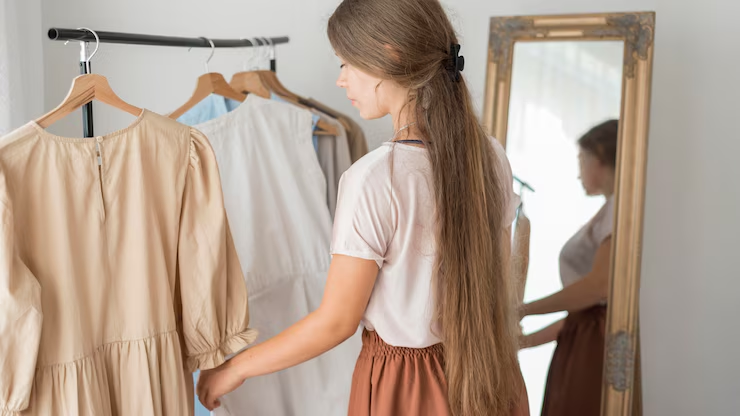Table of contents
As the weather shifts from one season to the next, your wardrobe should follow suit. But transitioning between seasons doesn’t mean you need to overhaul your closet completely. With a few thoughtful changes and versatile layering, you can seamlessly transition your wardrobe while staying stylish and comfortable.
Whether you’re going from winter to spring or summer to fall, this guide will walk you through practical tips, key pieces, and styling ideas to help you make the most of your existing wardrobe.
Why It’s Important to Transition Your Wardrobe

Learning how to transition your wardrobe is essential for:
- Maximizing your clothing investment
- Avoiding daily wardrobe stress
- Keeping your style weather-appropriate
- Staying on-trend without overbuying
Proper wardrobe transition means you can create more outfits with fewer pieces, reduce clutter, and dress appropriately no matter the forecast.
Practical Tips to Transition Your Wardrobe Between Seasons

1. Layer with Intention
Layering is your best friend during transitional months. Combine warm and light items, such as pairing a summer dress with a denim jacket or layering a turtleneck under a slip dress.
Tip: Keep a few neutral cardigans, denim jackets, and trench coats on standby.
2. Swap Fabrics, Not Styles
Maintain your personal style but shift the fabric. Move from wool and fleece to cotton and linen as the weather warms, or the reverse as it cools.
Example: Replace heavy sweaters with cotton knits or silk blouses.
3. Focus on Footwear
Boots might dominate in winter, while sandals and sneakers are perfect for warmer days. Transitional footwear like ankle boots or loafers work across seasons.
Tip: Invest in shoes you can wear with both pants and dresses.
4. Rotate Closet Staples
Pack away clothes that are strictly seasonal and rotate in trans-seasonal basics. Keep layering tees, jeans, light sweaters, and mid-weight jackets easily accessible.
Tip: Use under-bed bins or top-shelf storage for off-season items.
5. Use Color to Reflect the Season
Color plays a big role in seasonal dressing. As you transition your wardrobe, bring in warmer tones like rust and burgundy in fall or pastels and bright hues in spring.
Example: Pair a neutral outfit with accessories in seasonal colors to shift the tone without changing your core pieces.
Key Transitional Wardrobe Staples

- Denim jacket
- Lightweight trench coat
- Cotton button-up shirts
- Cardigans and pullovers
- Layerable dresses (like wrap or midi dresses)
- Neutral trousers or jeans
- Ankle boots and loafers
These pieces can be mixed and matched to suit various temperatures and styles, helping you stretch your outfits across seasons.
5 FAQ on How to Transition Your Wardrobe
Begin transitioning your wardrobe about 2–3 weeks before a season officially changes, especially when temperatures start to fluctuate.
Not necessarily. With versatile staples and smart layering, you can wear many items year-round. Invest in timeless pieces that can be styled differently.
Use breathable garment bags or plastic storage bins. Make sure everything is clean and dry before storing to prevent mold and odor.
Layering is key. Wear items you can easily remove or add, like a scarf, light sweater, or jacket. Always carry a compact umbrella or packable raincoat.
Neutral tones like beige, gray, olive, and navy work well across all seasons. Accent them with seasonal pops like coral for spring or mustard for fall.
Final Thoughts
Learning how to transition your wardrobe between seasons is a fashion skill that saves time, money, and frustration. With a few strategic adjustments, smart layering, and the right pieces, you can stay stylish regardless of what the weather throws at you.
So as the seasons change, take a fresh look at your closet, rotate in your favorites, and use this guide to keep your outfits balanced, on-trend, and season-appropriate all year long.





